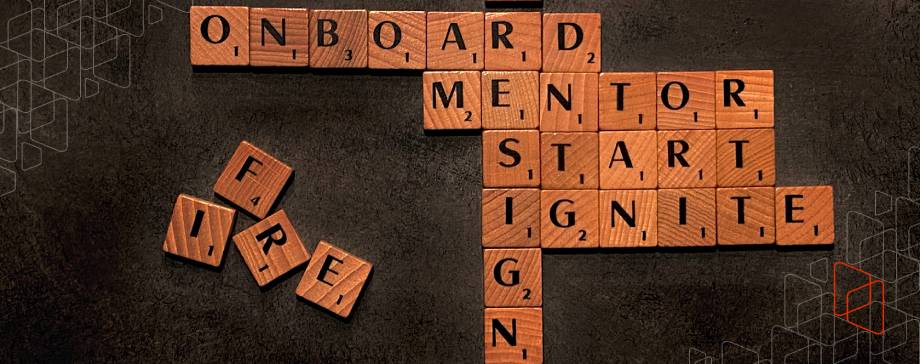Brett Knowles, pm2 Consulting
Brett is a long-time thought leader in the Strategy Execution space for high-tech organizations, beginning in the late 80’s while teaching at Harvard and being involved in the initial Balanced Scorecard research and books. His client work has been published in Harvard Business Review, Forbes, Fortune and countless other business publications.
Pub: March 31 2021
Upd: November 14 2022
Part 2 of our 3-part Work from Home Fatigue series.
In this article, we are primarily focused on the aspects of our new ways of working (web-meetings, WFH, etc.) related to the organization and personal performance. In this second part of our Work From Home Fatigue series, we detail the research behind the problems we exposed in our previous article.
This article is part two of this series. Over the course of these articles, we will take you on the journey from “What are we solving for?” (i.e. what is your organization experiencing), through “What does the research say?” (i.e. the academic diagnosis and statistics), and finally “How do we solve it?” (with ideas on specific actions to take.
The Covid Bubble
Our first post, Work From Home Fatigue - Why Zoom is Exhausting, focused on seven symptoms impacting team effectiveness during the pandemic. In this article we share what scientific research says about the root causes and underlying psychology of these symptoms. Our third article offers specific team practices to help you respond strategically in these challenging times.
The following symptoms of team dysfunction are likely to worsen during the pandemic. Your team may already be experiencing one or more of these:
- Drop in psychological safety on the team
- No opportunities to talk through challenges
- Draining, boundary-less workdays
- No relaxed time for teammates to bond
- Lack of mutual support
- Lots of talking, no listening
- Lack of shared clarity on priorities
In this 3-part series our aim is to present the risks, ground our understanding in science, and propose adaptive strategies to help achieve your OKRs in 2021.
Seven Symptoms of Team "Work From Home Fatigue"
- Low Psychological Safety
When there's a high level of psychological safety, people recognize the team environment as trustworthy, and they don't need to be on guard all the time - so they feel free to communicate, express concerns, and ask for feedback (Edmonson & Lei, 2014). Not surprisingly, reviews of multiple empirical studies validate that psychological safety is positively correlated with employee engagement, performance, satisfaction, and commitment (Frazier et al., 2017).
Establishing trust is a prerequisite for psychological safety. More than four decades of research has shown that trust is a critical ingredient in effective work relationships on teams (Costa et al., 2018). Breuer et al’s (2016) review of 52 scientific studies of more than 12,000 people on over 1800 teams demonstrated that the correlation between team trust and performance is even stronger on virtual teams than on face-to-face teams. Newman et al’s (2017) systematic review of more than 70 empirical studies led to the conclusion that high levels of psychological safety intensified "the positive relationship between team expertise diversity and team performance," and reduced "the negative effects of geographical dispersion, electronic dependence...and national diversity on team innovation” (528).
- No Reliable Opportunity to Talk through Challenges
A regular rhythm of collaborative problem-solving is critical for team effectiveness. Research has found that having ongoing contact with peers is an essential ingredient building trust and cohesion on virtual teams. Interaction frequency has been positively linked to “affect-based trust" - that is, the feeling that you can rely on your teammates to do their part, and support you (McAllister, 1995).
Similarly, "perceived proximity" - your sense of how close to or far away from you and your teammates are--is “tightly linked to communications frequency” (O’Leary et al, 2014, 1234). But it’s not just meeting frequency that matters, it’s having a reliable rhythm: Maznevski & Chudoba (2000) found that effective teams were distinguished by having a reliable pattern of meetings in which “meetings served as a heartbeat, rhythmically circulating new life into the team’s processes before members circulated to different parts of the world and task, returning again at a predictable pace”(486). A reliable pattern of team contact also provides opportunities to work through problems, and minimize misunderstandings and conflict (Klein & Kleinhanns, 2003).
- The Workday Never Ends
When is the workday "over"? The shift toward virtual teams, while offering greater flexibility, often brings with it an inability to tell where the workday ends and generates extreme tiredness from work (Von Bergen & Bressler 2019). Becker et al. (2018) found that just expecting to be needed after normal business hours causes stress on team members and their families, even when they don't end up working. And as we know, stress produces “restriction or narrowing of attentional focus” (Driskell et al, 1991 291). So even under normal circumstances, managing time and attention is a major challenge for remote teams (Klein & Kleinhanns, 2003, in Gibson & Cohen).
Decisions that in Pre-Covid times would have been made easily on the fly thanks to physical proximity, now require planning, scheduling, and remote coordination. Nowadays the sheer demands of meeting time can become an unmanageable burden. During in-person meetings, a leader "can see when attention is drifting and immediately bring the team back on track," the degree of attunement and rapport needed to do this remotely is a much bigger challenge (Nunamaker et al., 2009 114). As a result, virtual teams need to develop "new ways to focus attention on tasks" (Nunamaker et al, 2009 114). Managing team members' attention to ensure their activities and outputs are strongly aligned with their overarching objectives is a critical priority for leaders (Klein & Kleinhanns, 392).
- No Team Relaxed Time
Whereas remote work was supposed to free up team members to greater productivity, isolation “deteriorates one’s communication with colleagues and managers,” increasing the risk that team members “might perceive that the sense of belongingness decreases, which might have cohesion loss consequences: quality of the cooperation, commitment, social climate and turnover” (Ruiller et al, 2019 6).
Social identification theory posits that three factors lead to team solidarity: (1) “learning how to mutually understand each other,” which builds a sense of common ground, (2) this feeling of common ground helps team members “reduce uncertainty about their social environment” - something that's particularly important during a stressful pandemic, and (3) creates a bond and set of shared expectations between team members resulting in positive expectations and reliance on each other (Ruiller et al, 2019 7). This trusting bond is even more critical for teams whose success depends on a high level of collaboration, especially when communication may be sketchy or details are missing. The stronger this trusting bond, the greater “perceived proximity” team members have with each other (O’Leary et al., 2014), hence the easier it is to reach out for input, feedback, or a helping hand.
- No One Helps Me
Nowadays getting help can be a big issue. With the isolating impacts of living in the pandemic bubble, how to foster mutual support? Research confirms that without doubt “coordination and cooperation are more difficult in a virtual situation” (Duarte & Snyder, 2006 125).
If leaders, under pressure, de-emphasize collaboration and focus exclusively on peoples’ near-term individual deliverables, team members will take the hint. Especially during a stressful time, they will understandably prioritize their individual work above all else. This heightens the risk that the team will lose sight of larger strategic business objectives (Klein & Kleinhann, 2003). If leaders treat teams as a collection of individual contributors, they'll contribute to undermining virtual team members’ “perceived proximity'' to each and reliance on other, as well as the “depth of relationship, trust, and shared understanding'' that Peters & Manz (2007) argue are prerequisites for strong virtual team collaboration.
- All Talking and No Listening
Under pressure, listening is one of the first things to disappear. With focused attention in short supply, it might appear that everyone should be laser focused on the problems a team needs to fix. What's missing is listening.
Jumping over coworkers in a rush to quick solutions damages long-term team morale and cohesion. O’Leary et al (2014) found that for members of virtual teams, high quality communication symbolizes “reliability, dependability, likability, and technologically mediated accessibility” (1234), and led them to feel that they were closer to each other (perceived proximity). So how to listen fully?
Active listening means attending to “all the communications channels - the spoken words, the body language, tone of voice, and emotional content” (Schein 1993 43). This happens by placing your attention on the other person and what they are seeking to communicate about a situation, rather than jumping hastily to your own solution. Building a team habit of actively listening mobilizes everybody's brain power to solve problems. This enables the team to escape the trap that van der Smagt (2000) calls “a two-way monologue,” in which people simply talk “past” each other. On virtual teams, active listening should be paired with simple, clear communication in order to maximize shared understanding (Grosse 2002).
- Unclear Priorities
A key ingredient for successful virtual teams is establishing shared priorities (Blackburn et al., 2003). This includes ensuring that team activities and outputs are strongly aligned with business objectives (Klein & Kleinnhans, 2003).
According to the literature, achieving this alignment is a particular challenge for virtual teams. The scattering forces of remote work, plus pandemic stresses, added to the lack of the ongoing, in-person informal communication, can leave team members isolated and preoccupied, without a shared grasp of what’s most important.
According to Klein & Kleinnhans (2003), leaders need to ensure that team meetings are consistently used to clarify priorities, and mobilize the collaboration necessary to accomplish them. Teams must resist devoting excessive time to information dumps (“statussing”), which can become a draining waste of energy and attention. Arguably, Zoom Fatigue partly results from excessive information-sharing during which most meeting attendees are passive recipients.
What's next?
Having diagnosed the main symptoms teams are confronting, what to do? In our next article in this series, we will talk about how effective OKR implementations can start addressing each of these issues. Click here to read it!
- Relevant
- Recent
- Topics
- Archive
- April 2023 (1)
- March 2023 (1)
- June 2022 (1)
- May 2022 (3)
- April 2022 (3)
- March 2022 (5)
- February 2022 (2)
- January 2022 (3)
- December 2021 (3)
- November 2021 (4)
- October 2021 (5)
- September 2021 (8)
- August 2021 (7)
- July 2021 (2)
- June 2021 (3)
- May 2021 (5)
- April 2021 (8)
- March 2021 (4)
- February 2021 (3)
- January 2021 (3)
- December 2020 (6)
- November 2020 (9)
- October 2020 (1)
- September 2020 (5)
- August 2020 (4)
- July 2020 (1)
Discover More Hirebook Posts









